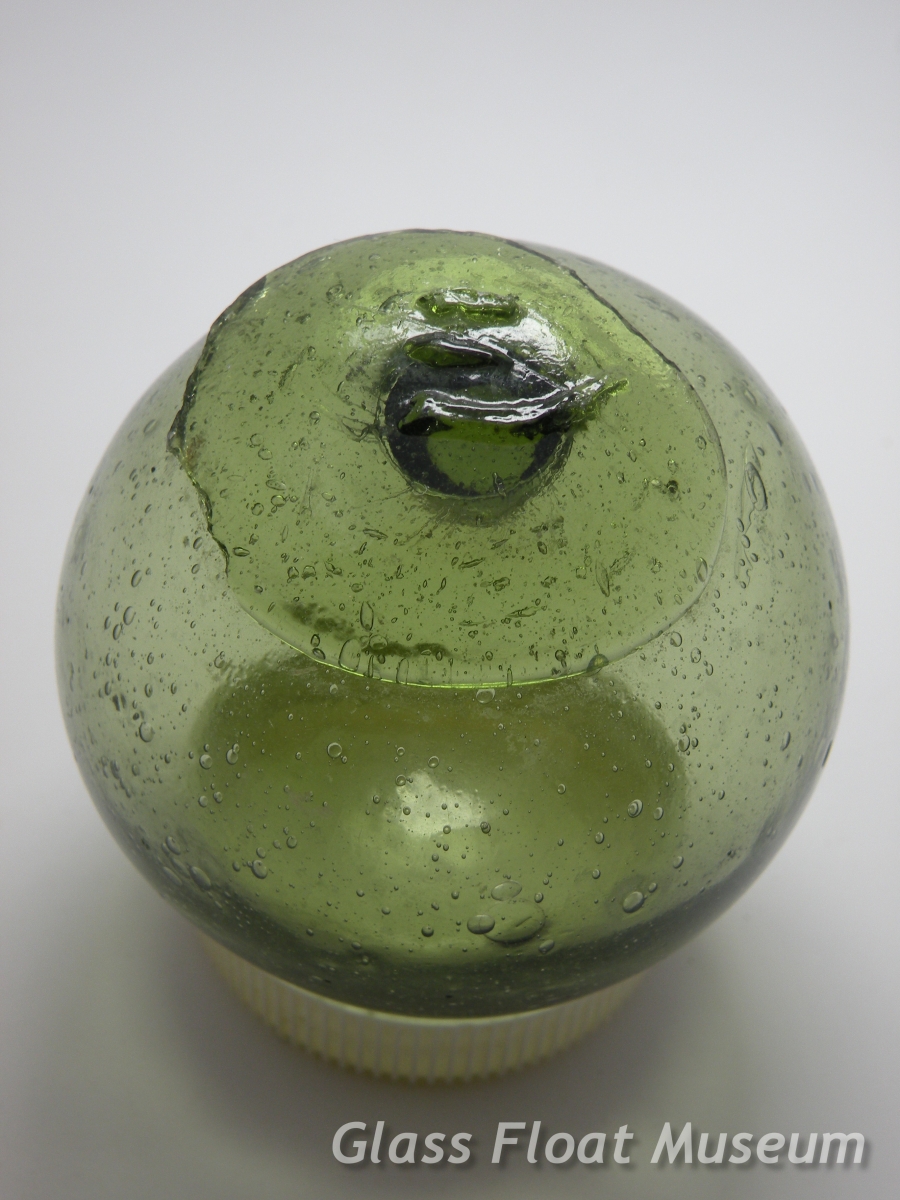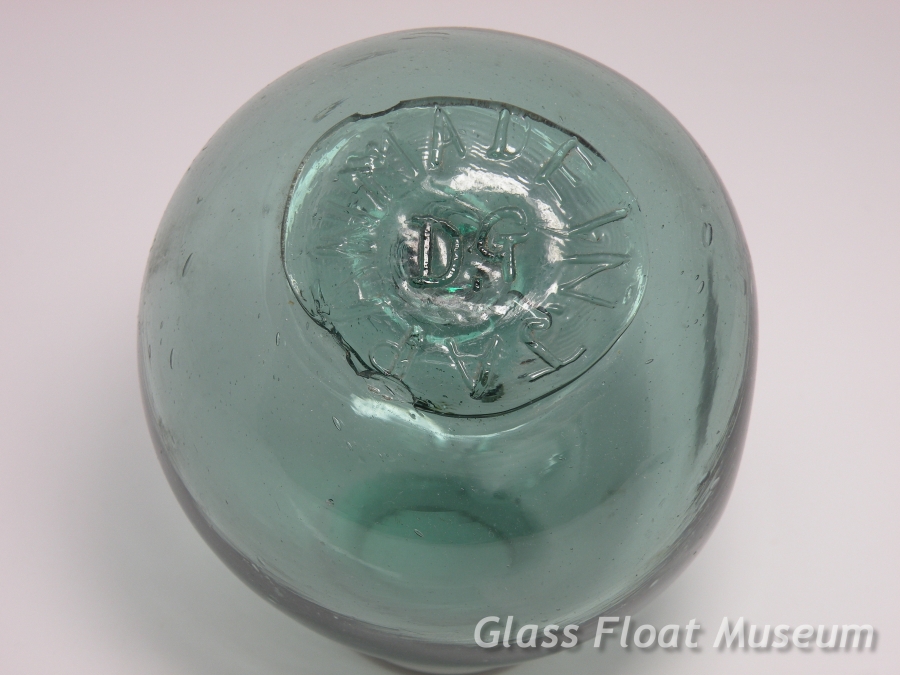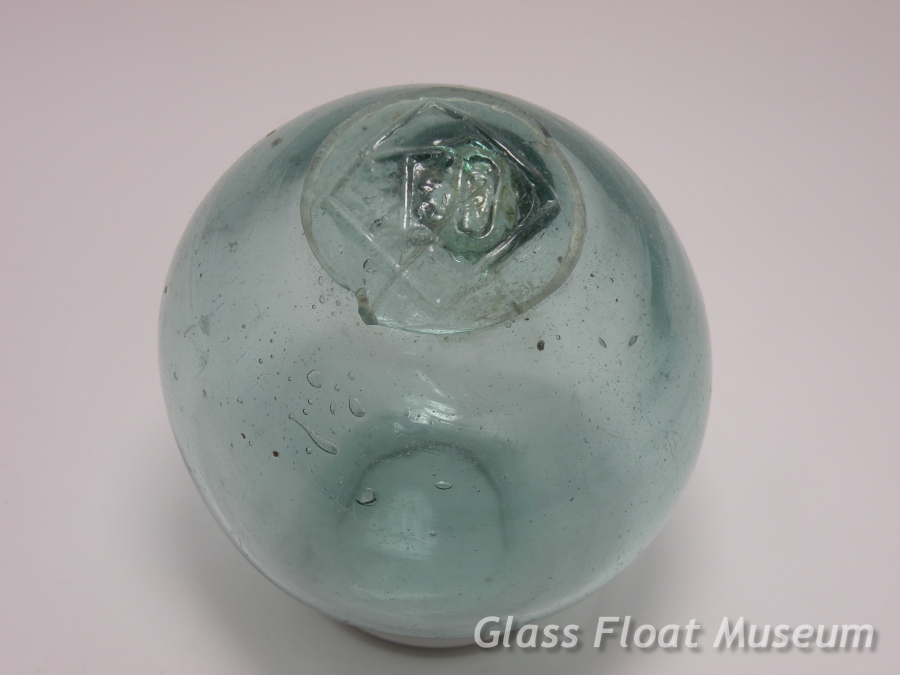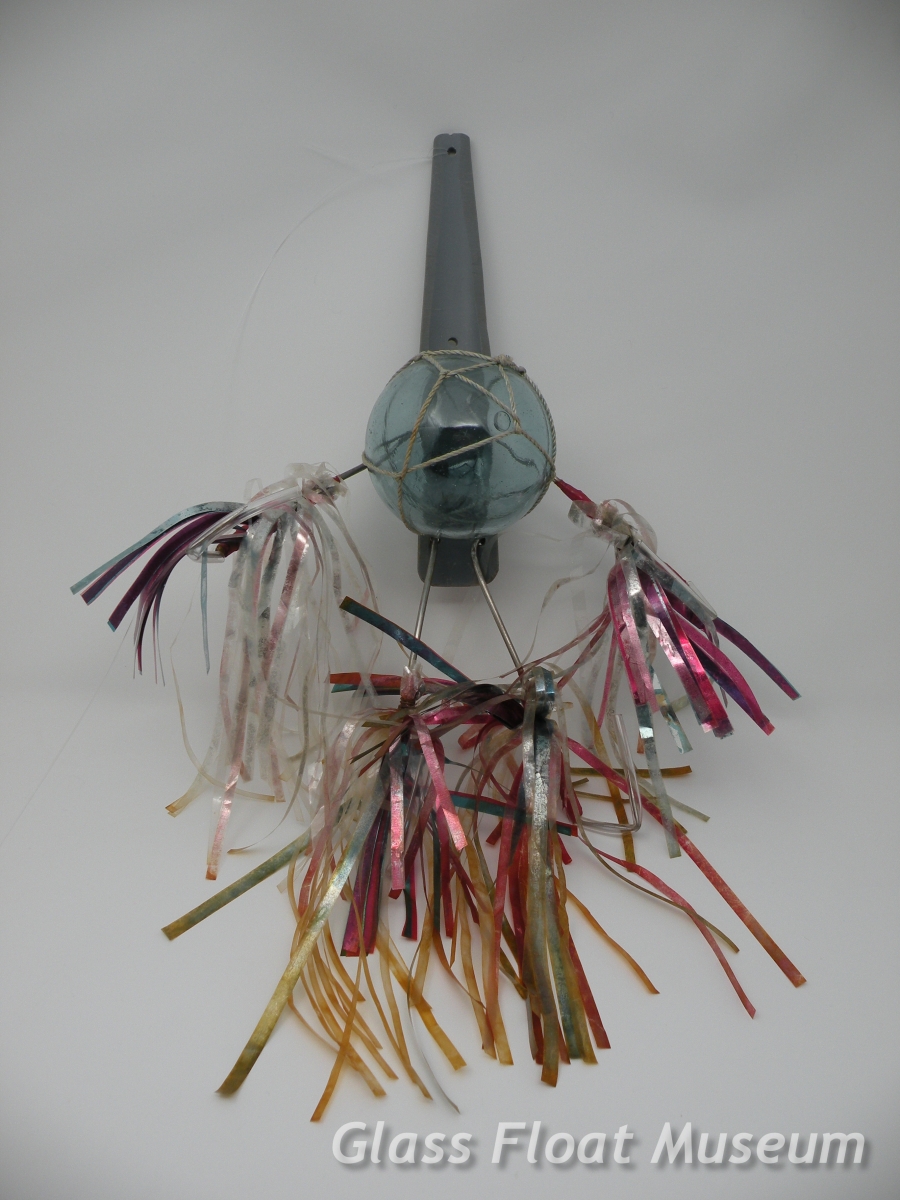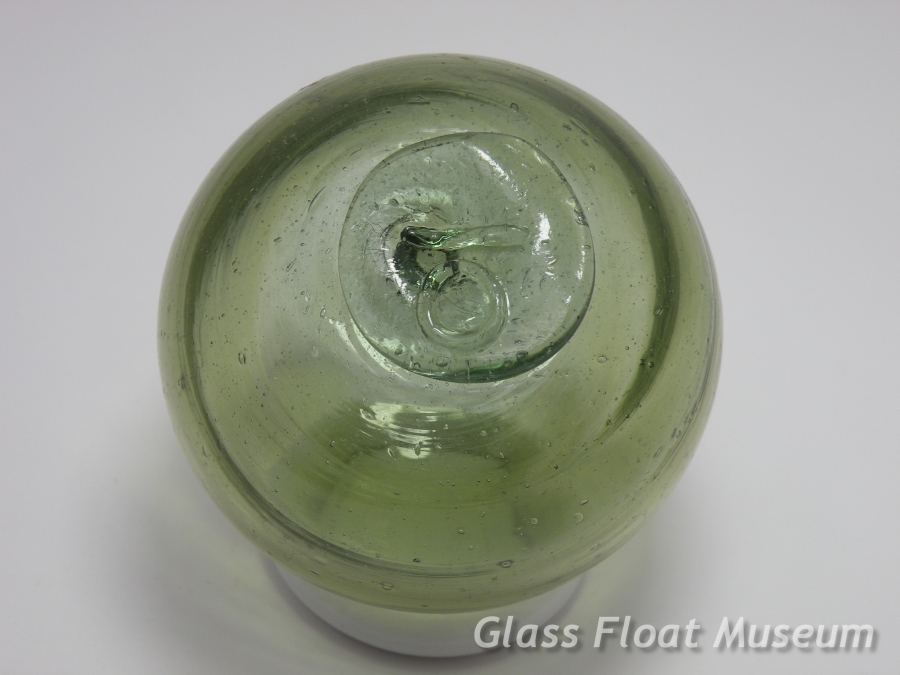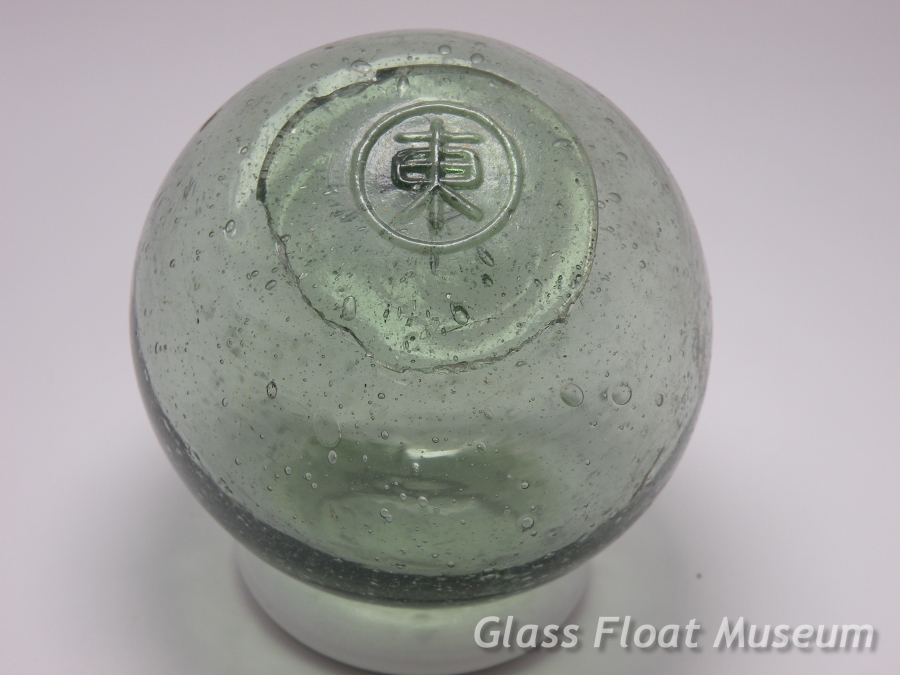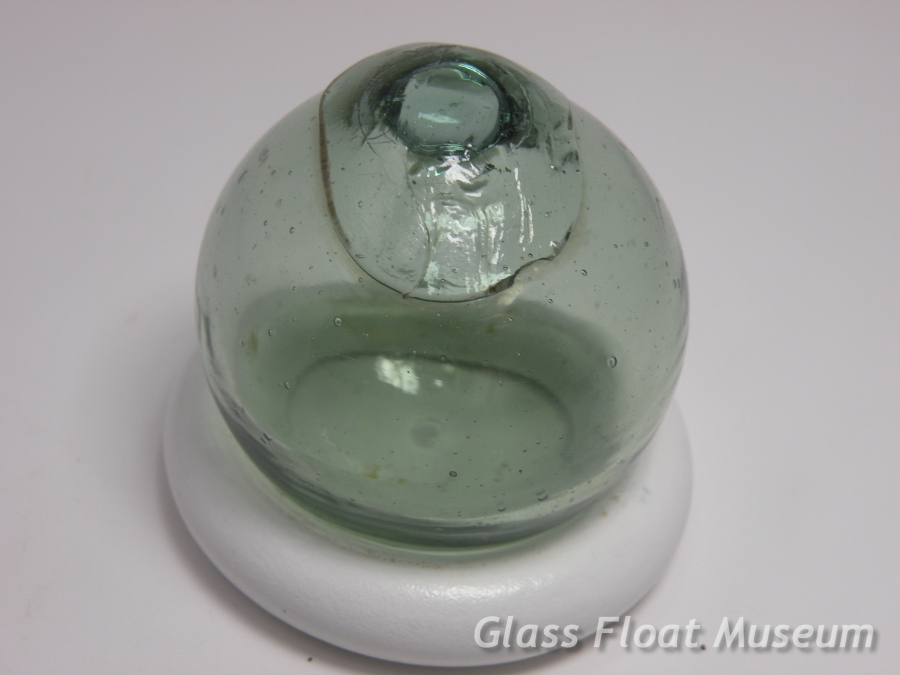
Keith Glein
This 'Shi' シ mark is quite interesting. All three strokes begin inline (i.e. align to a single line). This may be consistent with an "old style" katakana script of the Shi symbol.
This may be an older pre-WWII float.
It's a nice green color.
This float has excellent provenance. It was beachcombed on Kunashir Island in Russia by Olga & Dmitry Sokova.
This 18 inch float is a very unusual golden olive color.
It has no maker's mark but has two repair patches on the float.
The seal button is near perfect with no chipping that can be seen or felt. There's also some remnants of tar around the edges of the seal.
There are lots of bubbles in the glass.
It measures about 55 1/2 inches around.
Rare undocumented mark that has Sa サ on one side of the seal with Se セ on the other side. Both of the symbols are quite close to the edge of the seal.
This is the only float that has both Sa サ and Se セ mark that I've seen but I've heard that there may be others who have seen this mark previously. No public photos, though.
The float itself is nicely netted and it measures close to 5 inches in diameter. It also has a fine amber swirl emanating from the seal.
It's not easy to find a float marked with WP #340 'Made In Japan DG'.
As you can see, this mark has the classic Made In Japan around the edges with DG stamped in the middle of the seal.
This float measures 4 inches in diameter.
The float itself is slightly out-of-round and is a nice heavy glass construction.
It's widely known that mark WP #116 'TO in a Diamond' comes in many beautiful colors. There's also a version of this mark that comes in the standard blue-green color.
These blue-green floats are a little large than the colorful versions of TO; measuring about 3 1/2 inches in diameter.
This particular float has a well-centered stamp that shows all points of the TO mark.
The float is slightly out-of-round and is made of thick heavy glass.
Here's an undocumented mark that has the symbols Chohokei Ichi with two single dots; one above and one below.
The Chohokei Ichi was the mark of the Nichiro Fishing Company.
This float has excellent provenance. It was beachcombed on Kunashir Island in Russia by Olga & Dmitry Sokova.
WP #322 is one of the marks that uses the hiragana letter 'No' の. It also has a hash line next to the No の symbol.
This stamp is on a 3 inch float.
This float has excellent provenance. It was beachcombed on Kunashir Island in Russia by Olga & Dmitry Sokova.
This Tako Jig is a grey plastic stem with colorful streamers. It doesn't show much use. Tako means octopus in Japanese.
This Tako Jig has an orange plastic stem with colorful streamers. It doesn't show much use. Tako means octopus in Japanese.
Mark WP #320 is hard to find stamped on a 3 inch float.
It appears to be an older float made of heavy thick glass with lots of swirling in the glass.
This float has excellent provenance. It was beachcombed on Kunashir Island in Russia by Olga & Dmitry Sokova.
The rounded version of the Higashi 東 stamp is classified as a rare mark. Several of these WP #168 marks have been found in recent years, so they may not be quite as rare as they once were.
It looks like an older float to me, possibly pre-WWII. It measures about 3 inches in diameter.
This float has excellent provenance. It was beachcombed on Kunashir Island in Russia by Olga & Dmitry Sokova.
This mini ball has mark WP #173 'Betsu' 別. It's hard to find these mini balls with a maker's mark.
This float measures 5 1/2 inches in circumference or about 1 3/4 inches in diameter.
